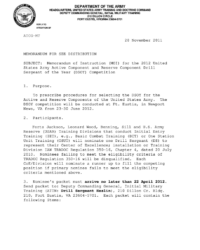Maintaining an accurate inventory of sports equipment is crucial for efficient operation and accountability. A well-organized inventory template helps track the quantity, condition, and location of all equipment, facilitating effective management and preventing unnecessary purchases. This article will explore the benefits of using a sports equipment inventory template and provide a comprehensive guide on how to create one that meets your specific needs.
An inventory template acts as a centralized database for all sports equipment information. It eliminates the need for multiple spreadsheets or manual tracking systems, reducing the risk of errors and inconsistencies. With a comprehensive template, you can easily monitor equipment usage, identify overstocked or underutilized items, and make informed decisions about equipment acquisition and disposal.
Moreover, a sports equipment inventory template enhances transparency and accountability. It provides a clear record of equipment ownership, condition, and usage history. This information can be valuable for insurance purposes, asset tracking, and preventing unauthorized use or loss. By establishing a standardized inventory system, you can ensure that all stakeholders have access to the same up-to-date information.
Creating a Comprehensive Sports Equipment Inventory Template
To create a comprehensive sports equipment inventory template, follow these steps:
1. Identify Equipment Categories
Begin by categorizing your sports equipment into logical groups. This could include categories such as game equipment, practice equipment, safety gear, and miscellaneous items. By grouping equipment into categories, you can easily search and track specific items.
2. Include Essential Information
Each item in your inventory template should include essential information such as a unique identification number, description, quantity, and condition. The unique ID could be an asset tag or serial number. The description should provide a detailed overview of the item, including its brand, model, and any specific features. The quantity should reflect the number of items available.
3. Track Equipment Condition
The condition of your equipment is crucial for player safety and performance. Your template should include a field to track the condition of each item, such as “new,” “excellent,” “good,” “fair,” or “needs repair.” This information will help you prioritize maintenance and repairs.
4. Specify Storage Location
Knowing where your equipment is stored is essential for efficient access. Include a field in your template to specify the storage location of each item, such as the equipment room, storage closet, or field.
5. Add Custom Fields
Depending on your specific needs, you may want to include additional custom fields in your inventory template. This could include fields for tracking purchase date, warranty information, or maintenance history.
Effective Equipment Management
Once you have created a comprehensive sports equipment inventory template, you can use it to effectively manage your equipment. Here are a few tips:
Regularly update your inventory to reflect changes in equipment quantity, condition, and location. This will ensure that your records are always accurate and up-to-date.
Use your inventory template to track equipment usage and identify overstocked or underutilized items. This information can help you optimize your equipment purchases and reduce unnecessary spending. By proactively monitoring equipment condition, you can identify potential issues early on and prevent costly repairs or replacements.


